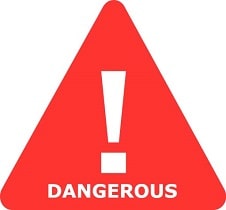Is Actinomycin C1 Safe in Breastfeeding
Question
I am a breastfeeding mother and i want to know if it is safe to use Actinomycin C1? Is Actinomycin C1 safe for nursing mother and child? Does Actinomycin C1 extracts into breast milk? Does Actinomycin C1 has any long term or short term side effects on infants? Can Actinomycin C1 influence milk supply or can Actinomycin C1 decrease milk supply in lactating mothers?
Actinomycin C1 lactation summary

- DrLact safety Score for Actinomycin C1 is 7 out of 8 which is considered Dangerous as per our analyses.
- A safety Score of 7 indicates that usage of Actinomycin C1 may cause toxic or severe side effects in breastfed baby.
- Our study of different scientific research indicates that Actinomycin C1 may cause moderate to high side effects or may affect milk supply in lactating mother.
- Our suggestion is to use safer alternate options rather than using Actinomycin C1 .
- Usage of Actinomycin C1 is in contradiction to breastfeeding hence if it is must to use Actinomycin C1 and there is no better alternative available then breastfeeding shall be stopped permanently or temporarily.
- Score calculated using the DrLact safety Version 1.2 model, this score ranges from 0 to 8 and measures overall safety of drug in lactation. Scores are primarily calculated using publicly available case studies, research papers, other scientific journals and publically available data.
Answer by Dr. Ru: About Actinomycin C1 usage in lactation
Drug is cleared from the body in 7 elimination half-lives. Resuming breastfeeding is likely safe after 10 days of pumping-and-dumping.
Answer by DrLact: About Actinomycin C1 usage in lactation
No information is available on the use of Actinomycin C1 during breastfeeding. Most sources consider breastfeeding to be contraindicated during maternal antineoplastic drug therapy. The manufacturer recommends that breastfeeding be discontinued during Actinomycin C1 therapy and for 14 days after the last dose.
Alternate Drugs
Dactinomycin(Dangerous)
Bleomycin(Dangerous)
Doxorubicin(Dangerous)
Dasatinib(Unsafe)
Azelaic Acid(Safe)
Nilotinib(Unsafe)
Vincristine(Dangerous)
Letrozole(Dangerous)
Ipilimumab(Unsafe)
Tamoxifen(Dangerous)
Exemestane(Dangerous)
Cetuximab(Unsafe)
Mitoxantrone(Dangerous)
Carboplatin(Dangerous)
Mercaptopurine(Safe)
Paclitaxel(Dangerous)
Dactinomycin(Dangerous)
Fluorouracil(Dangerous)
Nivolumab(Unsafe)
Hydroxyurea(Low Risk)
Alemtuzumab(Low Risk)
Vinblastine(Dangerous)
Etoposide(Dangerous)
Rituximab(Low Risk)
Pazopanib(Unsafe)
Bleomycin(Dangerous)
Doxorubicin(Dangerous)
Bevacizumab(Low Risk)
Gemcitabine(Dangerous)
Vinorelbine(Dangerous)
Cyclophosphamide(Dangerous)
Dacarbazine(Dangerous)
Cisplatin(Unsafe)
Trastuzumab(Unsafe)
Busulfan(Dangerous)
Imatinib(Unsafe)
Erlotinib(Unsafe)
Thioguanine(Dangerous)
Cladribine(Dangerous)
Docetaxel(Dangerous)
Dactinomycin(Dangerous)
Dactinomycin(Dangerous)
Fusidic Acid(Safe)
